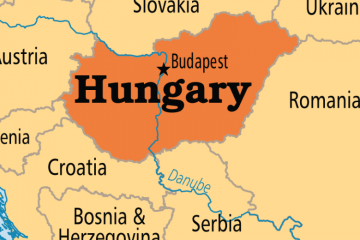By Reid Standish
When German Chancellor Angela Merkel and French President Francois Hollande returned from Minsk over the weekend, there was a fragile hope that the cease-fire agreement they secured might halt fighting in eastern Ukraine. That hope was smashed this week in Debaltseve, a rail junction between the rebel-held cities of Donetsk and Luhansk.
On Wednesday, Ukrainian forces retreated from the city, which has been the scene of intense fighting. Ukrainian President Petro Poroshenko did his best to put a positive spin on things. “Debaltseve was under our control, it was never encircled,” he told reporters before departing for a visit to the front lines. “Our troops and formations have left in an organized and planned manner.”
The question of Debaltseve’s encirclement might seem like an academic one, but it is anything but that to separatist fighters. The Donetsk People’s Republic, the main separatist faction, announced hours before the Minsk agreement took effect that they would not observe the agreement in Debaltseve. They claimed that because the town had been encircled before the cease-fire was set to begin, it did not constitute an active front in the fighting.
The Ukrainian troops trapped in the city, reported to number about 2,000, would probably disagree with that. There are unconfirmed reports that these forces took heavy casualties as they fought their way out of the city on Wednesday and toward the government-held city of Artemivsk. U.S. officials say the assault on Debaltseve was supported by Russian units and equipment including air-defense, rocket, and artillery systems — a charge Moscow denies.
The fall of Debaltseve echoes the August defeat in Ilovaisk — a separatist-held town in Donetsk oblast — of Ukrainian forces attempting to expel separatist troops. Located outside the city of Donetsk on a rail line leading to the Russian border, Ilovaisk, like Debaltseve, was seen as vital in the Ukrainian army’s efforts to create a gap between the two pro-Russian strongholds of Donetsk and Luhansk. The Ukrainian volunteer battalions attempting to take Ilovaisk found themselves outgunned and encircled by separatist forces who shelled Ukrainian positions with mortars, howitzers, and Grad rockets. Separatist fighters employed a similar tactic in Debaltseve as they formed a ring around the Ukrainian military and then rained down a barrage of artillery.
“Every loss is a major blow symbolically for the Ukrainians,” said Olga Oliker, director of the center for Russia and Eurasia at the Rand Corporation. “If they can’t hold Debaltseve. what can they hold?”
The defeat at Ilovaisk — and a series of similar losses across eastern Ukraine — were a major part of what goaded Ukraine to the bargaining table for the first cease-fire agreement signed in Minsk, on Sept. 5. Intensifying fighting in recent weeks and a series of losses, including the fall of the Donetsk international airport, spurred Ukraine to return to Minsk this month. Once more, the agreement has fallen apart amid renewed fighting leading to an exchange of territory.
“If this cease-fire collapses, its hard to see the Ukrainians coming back to the negotiating table. Don’t expect a third or fourth Minsk agreement,” said Steven Pifer, the director of the arms control and non-proliferation initiative at Brookings and a former U.S. ambassador to Ukraine. “If the cease-fire continues to unravel, we could see total war in eastern Ukraine.”





Comments